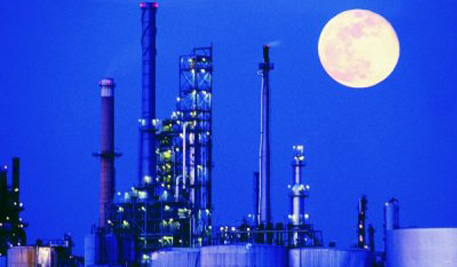Demulsification Techniques in Petroleum Industry
The chemical additives used to treat the emulsions from any substance, say petroleum is known as demulsifier or emulsion breakers. They play a prime role in extraction of crude oil. The separation of water from crude oil is necessary in the process to streamline further processing and to avoid corrosion. It is also used in waste water treatment. Thus, it is important in both aspects be it technical or environment.
There are several demulsification techniques such as chemical, electrical, thermal, membrane, centrifuge, bacteria, air floatation, ultrasonic, and microwave.
The article provides an overview of demulsification techniques used in petroleum industries:

Chemical Demulsification
Chemical demulsification is one of fundamental techniques of breaking emulsion and massively used in petroleum industries. The very basic principle of chemical demulsification mechanism of what so ever type of emulsion is that, the demulsifiers gradually replace the emulsifiers within the water-oil interfacial film, and that would eventually cause tremendous changes on the interfacial viscosity and elasticity
Amine Demulsifier, Polyhydric Alcohol, Acid and Polymeric demulsifiers are some of demulsifiers used in this technique. According to various studies and researches it is found that the amine demulsifiers were the most effective demulsifier in breaking the emulsion.
Electrical demulsification
Electrical demulsification is a process of breaking of either water in- oil, or oil-in-water emulsions by means of electrodes. Electrical demulsification devise is normally consists of two electrodes placed in opposed direction to each other.
Emulsion is placed between the two electrodes. The DC voltage is introduced to the system, due to which electric field voltage is generated within the emulsion residing between the electrodes, that because the water in the emulsion is conductive. This will break the energy barrier between droplets, and water molecules shall immediately be hydrolyzed into hydrogen and oxygen gases molecules and resultantly breaks the emulsions.
Thermal demulsification
Thermal treatment is referred to the use of temperature to break petroleum emulsions. Conventional hot plate is used in lab scales to provide the optimal temperature. Beside that some researchers had treated the emulsion by reducing their temperature up to beyond freezing point then rising the temperature gradually, this is known as the freeze/thaw method. However, if thermal treatment is applied with chemicals, it can improve the efficiency, since temperature can tremendousely reduce viscosity of emulsions.
Microwave Demulsification
Microwave radiation provides a specific heating mode. The dielectric heating generated by microwaves is associated with the radiation interaction with matter at molecular level. Ionic conduction and dipole rotation provide greater microwave heating efficiency. This advantage allowed its application in various areas such as organic and inorganic synthesis, processing of foods and biomass, processing of effluents, oil characterizations and in a number of other processes of interest for petroleum industry.
The microwave technology is also used to remove acidic components from petroleum. It reduces the viscosity of diesel fuel, promotes acceleration of the separation of the naphthenic acids which reduces its toxicity levels considerably.
Ultrasonic Demulsifiction
Sonication provides a cheap, simple, and harmless way of separating crude oils from water droplets via demulsification. It can be also used for emulsification processes. The investigation proposes the use of ultrasonication as a new technique to aid in the demulsification of crude oil emulsion
Conclusion
These are the various techniques of demulsification. Various tests and studies are conducted using such techniques, which conclude that the thermal with chemical demulsification is most effective practice in present day. Though, the ultrasonication is an expensive technique, it can be used in future as an alternative technique.
About Rimpro-India
Rimpro India is one of the leading manufacturers and exporters of Surfactant, Oilfield Chemicals such as Demulsifier and Corrosion Inhibitor, Cosmetic Waxes and Specialty Chemicals. We satisfy the needs of our clients who come from varied industries including Crude Oil, Textile, Cosmetics, Pharmaceuticals, Leather, Paint and many more. Our resourceful and high-performing professionals strive to achieve leadership in quality of its products and services. We have an inquisitive R&D department which constantly works on discovering new products and processing technologies. We provide quality products and reliable services to our well-regarded customers at competitive rates across the globe.